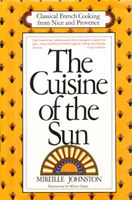Advertisement
Techniques and Tools
Appears in
Published 1990
There are seven ways of cooking: boiling, roasting, broiling, sautéing, frying, stewing, and braising (which means cooking in a closed pan with less liquid than when stewing). So one can endlessly seek utensils to help one master each method. With the proliferation of shops offering intriguing items, one can collect equipment forever. But so far as traditional Provençal cooking is concerned, it requires no more than four pans: an earthenware poêlon, which has a handle; a poêle, or frying pan; a fait-tout, a deep casserole made of cast iron, copper, or earthenware, which can be tightly closed; and a tian for gratin dishes.

